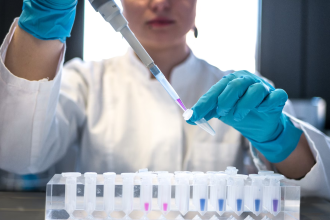Parkinson’s disease is one of the most impactful neurological disorders that come under the category of degenerative neurological disorders. Since a mature brain is incapable of regenerating itself, so far almost all the degenerative diseases are considered cureless. However, scientists and neurology experts are consistently utilizing the best of their abilities to uncover the root cause of Parkinson’s disease and possible methods that can help prevent this disease and somehow ease, if not entirely cure it.
One discovery that has been recently gaining a lot of attention is the role of stem cells in Parkinson’s disease therapy and prevention. While research is still underway to evaluate whether there is any advantage of stem cells used for Parkinson’s disease, some studies and hypotheses surely show the promise this idea holds. Read on to know more about using this therapy for Parkinson’s treatment and prevention.
What Is Parkinson’s Disease?
To understand Parkinson’s disease better, it is essential to first understand the role of dopamine in the human brain. Dopamine is a chemical that controls the flow of information in the brain and regulates movement and thinking. People suffer from Parkinson’s disorder when their dopamine-producing cells are killed and the level of this chemical decreases in their body. The disease also affects parts of the brain other than dopamine production units, and this explains the other issues that Parkinson’s patients face.
With more and more dopamine nerve cells dying, the patient starts suffering from tremors, rigidity in the body and slowed movement response as a whole. Some of the other common symptoms of Parkinson’s disease are:
- loss of smelling sense
- sleeping disorders
- depression
- loss of memory.
As the lack of dopamine continues to intensify, the disease keeps taking worse forms with other parts of the brain and nervous system also starting to get affected in one way or the other, leading to a limitation in the activity of patients.
What Are the Causes of Parkinson’s Disease?
Unfortunately, no one has yet been able to chalk out the root cause of this disease. In a few cases, Parkinson’s disease is a generic issue of aging. However, what causes the majority of cases of this disease without any traceable generic history of Parkinson’s affected ancestors is still unknown.
This disease is more common in men than women and usually affects people over 40 years old. However, young people may also be a victim of this disease too.
A brief body of research shows that smoking and coffee consumption reduces the risk of this disease but the exact reason behind this and whether or not this observation is true has yet to be determined.
Stem Cell Therapy for Parkinson’s Disease
A fully mature human brain is unable to regenerate its cells and nerves as such and this explains why our nervous system is incapable of recovering the dopamine nerve cells or making new ones once a few have died. However, the highly adaptable stem cells have now gained all the attention because they reveal themselves as being capable of repairing the lost cells. This generative ability of stem cells is what has started the entire stem cells and Parkinson’s disease theory, with scientists having high hopes from them.
In addition, current research uses these cells to grow dopamine-producing nerve cells under artificial conditions in laboratories, and applied in animal models they do a pretty good job. Such usage of stem cells is helping the researchers better understand this disease and check whether there might be any specific deformity in the dopamine nerve cells in those who inherit Parkinson’s genetically. Since health experts also know what type of cell is affected by this disease, they are also looking forward to the opportunity that exists in replacing the affected and lost cells with the lab-grown ones.
What Are Stem Cells?
Simply defined, stem cells are a living body’s raw material to begin with the development of other cells. These cells grow and divide into daughter cells to bring forth other specialized cells. In addition, stem cells are able to relieve neuroinflammation, which is one of the possible causes of nerve cell death. For these capacities, they are used in regenerative medicine for several medical conditions.
Practical Usage of Stem Cells for Parkinson’s Patients, and Future Prospects
In stem cell therapy, the cell-based product is administered into the patient’s bloodstream or intrathecally. This drug is obtained from stem cells harvested from bone marrow, adipose tissue, or other sources, and cultivated in the laboratory. These cells are known to have the ability to migrate to places of damaged tissues and provoke the process of their recovery. After the injection, the cells begin their work, and within a few weeks or months, the patient may notice an improvement in the symptoms of the disease.
Summary
Parkinson’s disease is currently an incurable and partially treatable neurological disorder that has been affecting people in all regions of the world. Since its main cause is the death of dopamine nerve cells, scientists are considering the possibility of using stem cells, extracted from adult tissues, to regenerate neurons, including those of dopaminergic cell groups, by transplanting them to the human body. While there’s a lot of promise in such a treatment, many have concerns associated with this experimental method.
What are your thoughts on this? Do you think that this treatment method can provide a good outcome for Parkinson’s disease? Let us know!















